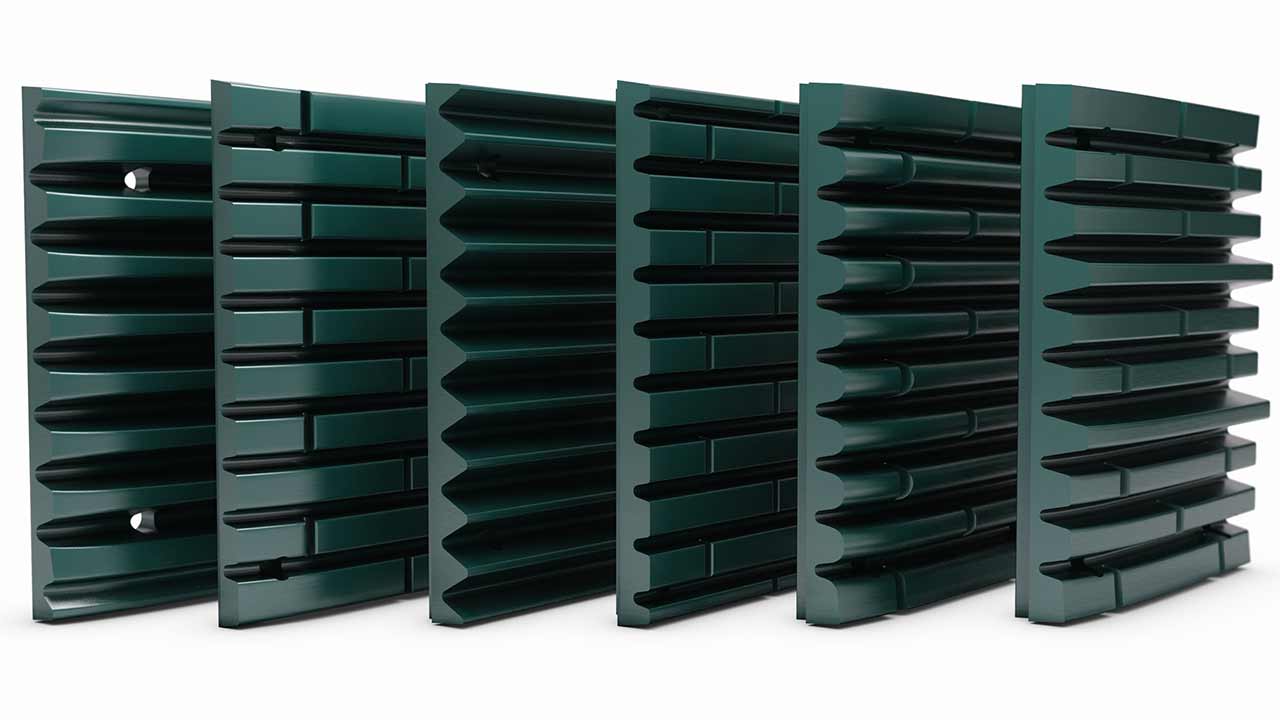For example, if you are crushing gravel, the crushability may be easy. For this purpose, we recommend the super grip or standard jaw to achieve the optimal result. For hard and abrasive feed material, it is ideal to choose a jaw profile that has design factors that withstand heavy wear. For example, a jaw profile with more wear-resistant manganese steel and a flat tooth profile are good options to consider when the feed material is very wearing. Our Quarry or MX jaws are suitable for feed material that is more challenging to crush – abrasive or blasted rock, for example.
To achieve the ideal outcome, the feed material should not contain fines. Feed material size smaller than the CSS should be scalped away before feeding to the crusher. However, in some production cases, there may be no scalper available, or the scalping is inefficient, meaning the fine material ends up in the crushing chamber. For feed material with fines, a jaw profile with well-spaced teeth that let fines flow through is ideal. For example, coarse corrugated jaws are optimal, because the design allows for fine material to easily pass through the chamber. They are also optimal for feed that tends to break into slabs, reducing the amount of slabby material in the crusher discharge.



